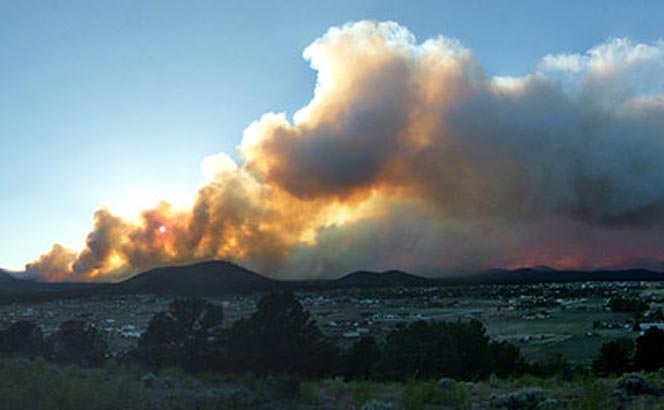
The physical impact of wildfires is something residents in the Southwest are all too familiar with—charred trees, damaged structures, flooded streets and barren land endure as a monument to the devastation it leaves behind.
The financial impact of a wildfire can be just as devastating to public resources and private property owners, according to a new study by Northern Arizona University’s Ecological Restoration Institute and Arizona Rural Policy Institute.
The study examines the 2010 Schultz Fire and resulting flooding that occurred in the affected areas. The total financial impact of the fire and flooding is estimated to be between $133 million and $147 million.
The report, titled “A Full Cost Accounting of the 2010 Schultz Fire,” is intended to provide a clear picture of how fire affects communities, governments, non-profits and property owners. The findings raise questions about the full financial impact of large-scale wildfires that have swept across California, Arizona and Colorado in recent years.
“We were able to estimate the full cost of the fire and flooding beyond the typical analysis of tracking the cost of fire suppression, remediation and loss of timber value,” said Wayne Fox, director of the Arizona Rural Policy Institute and assistant dean of The W.A. Franke College of Business. “Our core analysis captured direct government expenditures, loss of property values and direct financial loss. As large as the numbers are, they are conservative.”
The Schultz Fire burned 15,000 acres north and west of the city of Flagstaff and resulted in the evacuation of approximately 700 homes. Heavy flooding following the fire inundated property below the burn area and resulted in the death of a 12-year-old girl.
The research also determined that had the area’s forest undergone thinning of small diameter trees prior to the fire, an investment of $15 million, the impact of the fire would have been lessened.
“This study demonstrates the value of prevention and the terrible cost of inaction,” said Diane Vosick, director of Policy and Partnerships at the Ecological Restoration Institute. “It shows that the brunt of forest fire and post-fire flooding is felt by everyone in the community. This can all be avoided by science-supported forest restoration that includes thinning and burning.”
The report examines the additional costs—including societal costs and impacts on private property owners—from official government reports that listed the cost of the fire and flood at $60 million. The study’s estimated total cost was determined through analysis of Coconino County Assessor records, a survey of impacted residents and the perceived value of the loss of endangered species and human life.
The full report is available here.



